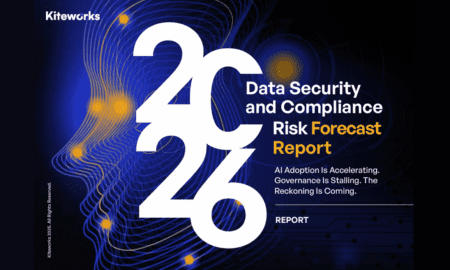Managing projects can be challenging. There are multiple deadlines, different team members, and shifting priorities to keep in mind. Without a good system, it’s easy for things to slip through the cracks. That’s why project managers rely on tools that help keep everything organized and visible to everyone involved.
These tools are not just about ticking boxes on a to-do list. They make it easier to track progress, communicate effectively, and handle unexpected changes without losing focus. In this guide, we’ll look at categories of tools that can help you bring order to your projects and guide them from start to finish with less stress.
Organizing Tasks and Timelines
The foundation of project management is knowing what needs to be done and when. If tasks and deadlines are unclear, even the most skilled team can run into problems. That’s why task and timeline organization should be the first priority when choosing tools.
Good task management platforms make it simple to assign work, track deadlines, and update progress in real time. They provide a clear view of each person’s responsibilities and show how individual tasks connect to the overall project goals. Many of these tools also include visual elements like calendars and progress bars, which make it easier to see what’s on schedule and what might need more attention.
When you’re comparing different platforms, it helps to explore a list of the best productivity tools that focus on strong task management features. These can make a big difference in organizing workloads, meeting deadlines, and keeping the whole team aligned. The right choice will depend on your project’s size, complexity, and team structure, but starting with proven options can save time and reduce trial-and-error.
Streamlining Communication
Clear and consistent communication is a major factor in whether a project runs smoothly. When team members rely on scattered emails or separate messaging apps, important updates can get lost. This leads to misunderstandings and delays.
The most effective project management setups include communication tools that bring conversations, updates, and files into one space. This way, everyone can see discussions alongside the tasks they relate to. Real-time messaging makes it easy to ask questions or share quick updates without waiting for the next meeting.
Having all communication in one place also creates a record of decisions and changes. If someone joins the project mid-way, they can review past messages and get caught up without needing a full briefing. It also reduces the time spent searching for information, since it’s stored where the work is happening.
Tracking Progress and Performance
Even with clear tasks and strong communication, projects can drift off track if progress isn’t monitored. Tracking tools give project managers an overview of how work is moving forward. They show which tasks are complete, which are in progress, and which are falling behind.
Progress tracking isn’t just about checking boxes. It’s about spotting patterns and addressing small delays before they become big issues. For example, if a certain stage of the project is always taking longer than expected, you can adjust schedules or reassign resources to keep things balanced.
Performance tracking also helps during project reviews. It gives you real data to evaluate what worked well and what could be improved for future projects. This ongoing feedback loop is what helps teams get better over time.
Managing Documents and Resources
Projects often involve multiple files—plans, reports, templates, and reference materials. Without a system for managing these, valuable time can be wasted searching for the latest version. A good document management tool keeps everything in one secure, organized location.
Centralized storage means team members can access the same information without confusion about which file is current. Version control features allow you to see changes made over time, reducing mistakes caused by outdated files. Quick search functions also save time when you need to find specific details in a hurry.
Document organization is more than convenience—it supports collaboration. When everyone can open, review, and comment on the same file, feedback becomes faster and more effective. This approach keeps projects moving forward without delays caused by missing or misplaced resources.
Automating Repetitive Tasks
Repetitive tasks can take up a surprising amount of time in a project manager’s schedule. These might include sending weekly status updates, creating recurring reports, or setting up tasks for repeated processes. Automation tools can handle these jobs with minimal manual input, freeing you to focus on higher-value work.
For example, you can set up automatic reminders for approaching deadlines, or schedule regular reports that are sent to stakeholders without extra effort each week. Data entry tasks can also be automated, reducing the risk of mistakes and saving time.
While automation can’t replace all manual work, it can significantly cut down on repetitive actions that slow progress. By automating routine processes, you create more time to address challenges, make strategic decisions, and guide your team.
Adapting Tools to Different Project Needs
No two projects are exactly alike. The tools that work well for one may not be the best fit for another. That’s why flexibility is an important part of tool selection. You want systems that can be adjusted as the scope, budget, or timeline changes.
Some projects might require detailed time tracking and budgeting features, while others need stronger collaboration tools. Having the ability to add or remove functions means you can create a setup that matches the unique requirements of each project.
Adaptability also helps when team sizes change. A tool that works for a small group should still function well if the team expands. The same applies to remote or hybrid teams—being able to adjust communication and tracking options keeps everyone connected, regardless of location.
Regularly reviewing your tools is also useful. As new projects come in, you may find that certain features are no longer necessary, while others become more important. Being willing to adjust your approach keeps your systems relevant and effective.
Effective project management is built on organization, communication, and adaptability. The right set of tools can make these elements easier to maintain, helping you guide projects from start to finish with less stress.
By organizing tasks, streamlining communication, tracking progress, managing resources, and automating repetitive work, you create a foundation that supports both your team and your goals. Taking time to choose and adapt your tools allows you to focus on leading your team with clarity and confidence.



































